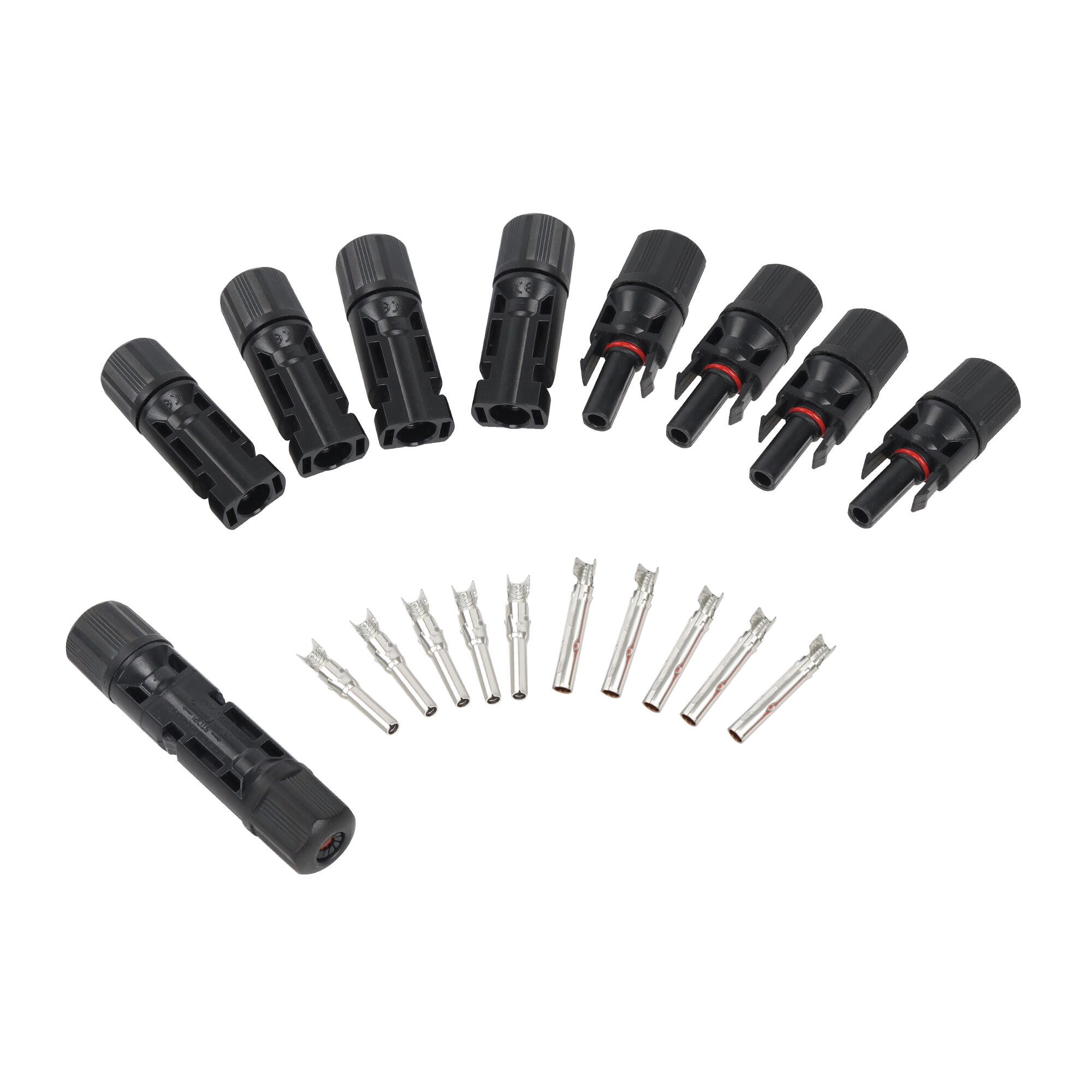Understanding the Critical Role of Solar Connection Systems
The solar energy industry has witnessed remarkable growth over the past decade, with photovoltaic connectors emerging as crucial components in maximizing system performance. These specialized electrical connectors serve as the vital links between solar panels, enabling seamless power transmission and optimal energy production. As solar installations become increasingly sophisticated, the significance of high-quality photovoltaic connectors cannot be overstated – they are the unsung heroes ensuring reliable and efficient solar power generation.
Modern solar arrays depend heavily on robust connection systems to maintain consistent power flow and minimize energy losses. Photovoltaic connectors play an instrumental role in this process, providing secure electrical connections that can withstand harsh environmental conditions while maintaining optimal conductivity. Their design and implementation directly impact the overall efficiency and longevity of solar power systems.
Technical Aspects of Modern Solar Connectivity
Design Elements and Material Selection
The engineering behind photovoltaic connectors involves careful consideration of multiple factors. High-grade materials such as copper alloys with specialized coatings ensure excellent conductivity while preventing corrosion. The connector housing typically utilizes UV-resistant polymers that protect the internal components from environmental degradation. These design choices are fundamental to creating connectors that maintain stable electrical connections throughout decades of operation.
Advanced photovoltaic connectors incorporate sophisticated locking mechanisms and weatherproof seals. These features prevent moisture ingress and maintain connection integrity even under extreme temperature fluctuations. The precision engineering extends to contact design, where factors like surface area and pressure distribution are optimized for minimal power loss.
Performance Standards and Safety Features
Industry regulations demand strict adherence to safety standards for photovoltaic connectors. Modern connectors must meet international certifications that verify their performance under various environmental conditions. These components are designed with multiple safety features, including touch-proof construction and foolproof mating systems that prevent incorrect connections.
The implementation of advanced safety features helps prevent arc faults and ensures stable connections even in high-voltage applications. Quality photovoltaic connectors undergo rigorous testing procedures to verify their performance in extreme conditions, including thermal cycling, humidity exposure, and mechanical stress testing.
Impact on System Performance and Reliability
Energy Loss Prevention
One of the primary functions of photovoltaic connectors is minimizing energy losses in solar power systems. High-quality connectors maintain extremely low contact resistance, ensuring that maximum power is transferred from the panels to the inverter. This efficiency is crucial for maintaining optimal system performance and maximizing return on investment for solar installations.
Advanced connector designs incorporate features that prevent micro-arcing and maintain stable electrical connections even under thermal cycling. These characteristics help reduce power losses that could otherwise accumulate to significant amounts over the system's lifetime. The implementation of properly specified photovoltaic connectors can lead to measurable improvements in overall system efficiency.
Long-term System Durability
The durability of photovoltaic connectors directly influences the longevity of solar power systems. Quality connectors are engineered to maintain their performance characteristics for 25 years or more, matching the expected lifespan of modern solar panels. This long-term reliability is achieved through careful material selection and robust design principles that account for environmental stresses.
Regular maintenance and inspection of photovoltaic connectors help ensure their continued performance. However, well-designed connectors require minimal maintenance intervention, contributing to reduced operational costs over the system's lifetime. The initial investment in superior connection components pays dividends through enhanced system reliability and reduced maintenance requirements.

Installation Best Practices and System Integration
Professional Installation Requirements
Proper installation of photovoltaic connectors is crucial for achieving optimal system performance. Trained professionals must follow specific procedures for crimping, assembly, and testing to ensure reliable connections. The use of appropriate tools and verification methods helps prevent common installation issues that could compromise system efficiency.
Installation teams must be familiar with the latest connector technologies and manufacturer specifications. This knowledge ensures that connections are made correctly the first time, reducing the risk of future failures. Proper documentation of installation procedures and regular quality checks help maintain high standards across large-scale solar projects.
System Design Considerations
The selection and implementation of photovoltaic connectors must be considered during the initial system design phase. Factors such as voltage ratings, current capacity, and environmental conditions influence connector specifications. System designers must account for future expansion possibilities and maintenance access when planning connector layouts.
Modern solar installations often incorporate smart monitoring systems that can detect connection issues before they become problematic. The integration of advanced photovoltaic connectors with monitoring solutions helps maintain optimal system performance while facilitating preventive maintenance strategies.
Frequently Asked Questions
How often should photovoltaic connectors be inspected?
Professional inspection of photovoltaic connectors should be conducted annually as part of regular system maintenance. However, visual checks can be performed more frequently, especially after extreme weather events. This helps identify any potential issues before they affect system performance.
What makes a high-quality photovoltaic connector?
High-quality photovoltaic connectors feature superior materials, precise engineering, and comprehensive safety features. They should have excellent conductivity, robust environmental protection, and meet or exceed relevant industry standards. Additionally, they should come with clear documentation and installation guidelines.
Can different brands of photovoltaic connectors be mixed in a system?
While technically possible in some cases, mixing different brands of photovoltaic connectors is generally not recommended. Using connectors from the same manufacturer ensures compatibility, maintains warranty coverage, and provides optimal performance. Always consult with system designers and follow manufacturer guidelines regarding connector compatibility.




